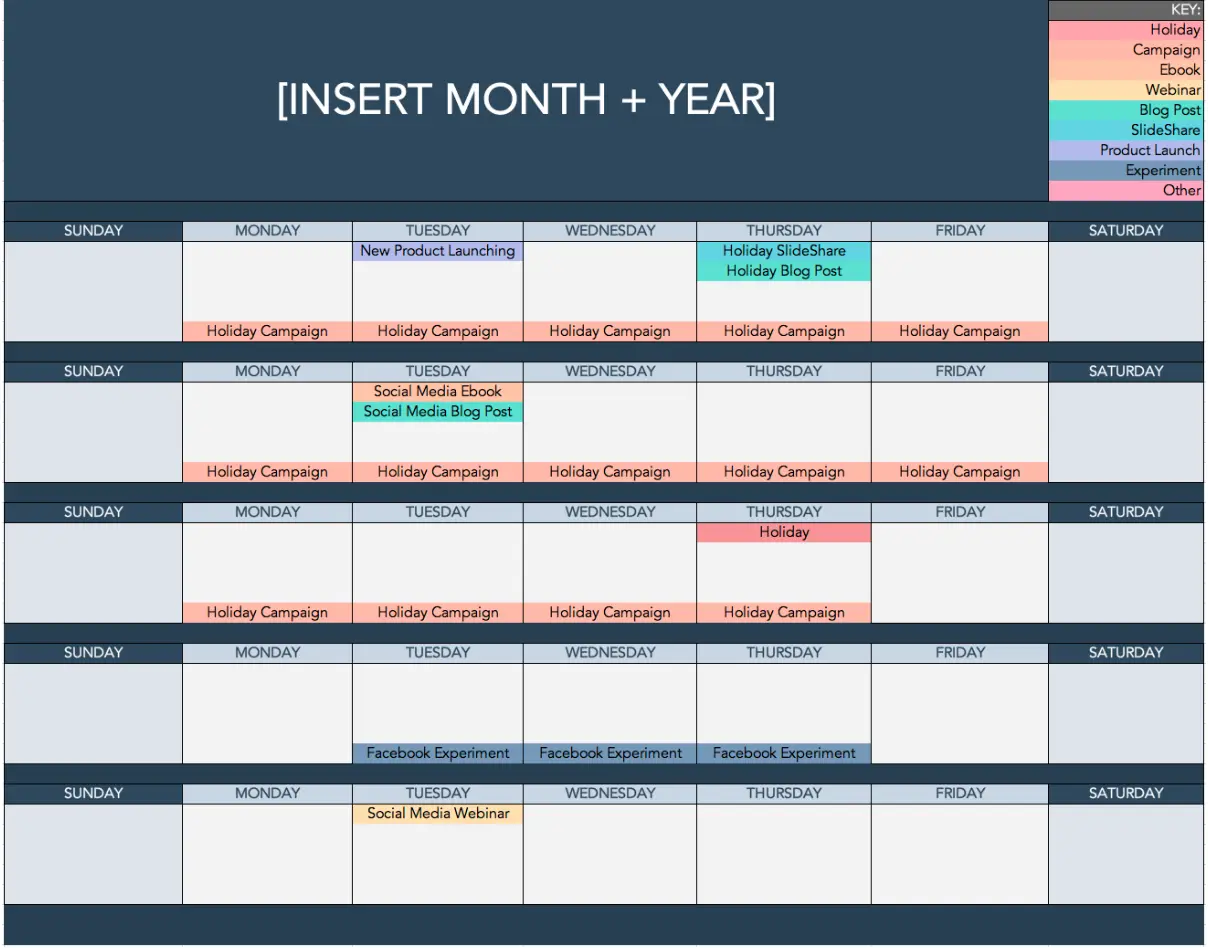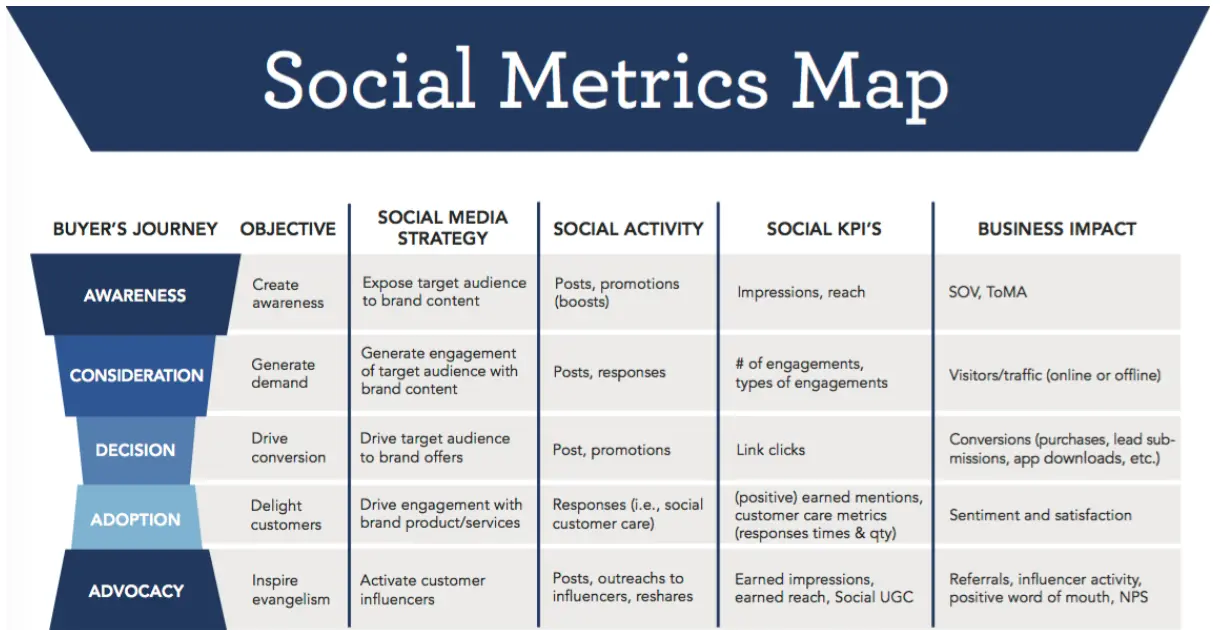With more than 4.6 billion users worldwide, social media has quickly become a prominent channel for today’s marketers to expand their reach and catch more eyeballs on their businesses.
From TikTok to Instagram, they make sure they leave no stone unturned when it comes to producing content that engages their audience. The thing is, more and more businesses also jump into the social media marketing bandwagon. Nearly 97% of companies have at least one social media platform.
With almost endless options, users have become pickier about what is worth their time on the platform. It’s a fight for eyeballs out there, so having a complete social media strategy is a must.
7 Steps to a Successful Social Media Presence
- Define your goals
- Know your ideal customer persona
- Choose the right platforms
- Research your competitors
- Keep your content calendar full
- Analyze and measure performance
- Conduct a social media audit
In this article, we’ll detail each of these points and unlock the social media blueprint for business success.

1. Define your goals
Our #1 is a no-brainer. Every digital marketing strategy should have designed to achieve a specific goal.
So, before you start investing in anything related to your social media marketing, you first need to understand why you’re doing it in the first place. Common social media marketing goals are:
- Increasing brand awareness
- Establish a solid audience with interaction
- Provide more engaging customer support
- Drive more traffic to your website
- Generate more qualified leads
Well-defined and specific goals to help you track your progress and align your team with the overall vision. They give you a guide into what you can do to improve performance.
2. Know your ideal customer persona
To be able to create a content strategy for social media that your target customers would want to see, you need to understand them inside and out— their demographics, interests, needs, and pain points.
This laser-targeted approach of identifying who your ideal customer is will always win the social media game. Additionally, you can start using social listening tools to identify the traits and pain points of your idea customers.
Remember that audiences only engage with content they can relate to and understand. They also expect content that helps with their problems. Here’s an example of a customer persona:

Creating customer personas helps you see your target market as real people with real problems and a story behind them. Only then would you be able to design effective strategies that connect with them on an emotional level.
In other words, this will help you determine the kind of content you should produce, the value you bring, and what tone/language you should use when addressing them.
3. Choose the right platforms
Every social media platform is different. Each has its own demographic, content format, and overall user experience. That’s why you must research carefully before investing your time and resources in creating social media campaigns for a particular platform.
The key here is to identify where your target market hangs out most, then determine the most appropriate market research tool for your needs.
Once you know that, start creating valuable and shareable content on those platforms that resonate with their needs.
For example, if you’re using audience targeting for millennials, Instagram should be one of your top priorities because 75% of them use the platform. TikTok is the best place to go if you target an even younger crowd.
Meanwhile, no other platform is better than LinkedIn if you're in a more professional setting targeting B2B companies or professionals.
This can be really useful if you operate a B2B procurement marketplace or if you're offering a B2B SaaS solution to other businesses.
4. Research your competitors
As a business, you’re not the only one trying to accomplish the social media marketing goals we discussed. Other companies in your industry are vying for attention from the same target audience you want to reach.
Therefore, you must understand what strategies and tactics your competitors are using on social media so that you can stay ahead of the curve. Besides, customers are already actively researching companies and their products/services before making a purchase decision.
They often discuss their spending habits among their friend circles (such as Snapchat and Facebook groups). Then your friends tell their other friends, and the word about your company spreads fast.
So, if you want to increase the chances that they’ll buy from you, it’s essential to ensure your social media presence is up-to-par or even better than your competitors.
Start with social media competitor analysis by looking at the platforms they use most and the strategies they implement on each platform. See what kind of content performs well for them. Also, take note of their social media KPIs and track their progress to get an idea of how well they’re doing.
5. Keep your content calendar full
Consistency is one of the most critical factors in social media marketing. Posting quality content helps you to stay top-of-mind and build a solid relationship with your target audience.
To produce engaging content consistently, you must have a content calendar.
This document guides you into what kind of content you should be posting (whether it’s a UGC, sales videos, polls, a thread, etc.) and when you should be posting it.
The calendar keeps track of all the content you need to produce, when it should be published, and what kind of message you want to deliver through each piece. To help you with managing the content calendar, social media scheduling tools track and manage the content efficiently.
For example, you can use a dedicated Canva social media scheduler to post content created on that platform.
A steady stream of freshly-new content will encourage more interactions. As we’ve mentioned, one of the main goals of social media marketing is to drive engagement with your target audience.
After all, what good is a social media platform if you’re not using it to interact with others? There are tons of tools that offer you a free content calendar template. Here’s one from HubSpot:

6. Analyze and measure performance
Your social media marketing efforts won’t mean anything if you don’t take the time to analyze and measure your success. Doing so helps you to understand what works and what doesn’t, so you can make the necessary changes to improve your performance.
The most common metric is engagement rate, which refers to the number of people interacting with your content divided by the number of people seeing it.
You can track other KPIs: reach, brand awareness, website traffic, and conversions. For video content, pay attention to the video marketing metrics like view counts, average views percentage, or social shares.
To measure your success accurately, you need to set up social media tracking tools such as Google Analytics or Hootsuite Insights. These platforms help you to collect data and generate reports on your social media performance.
Below is the detailed social media metrics map for each buyer’s journey:

7. Conduct a social media audit
The next step is establishing a baseline for your social media marketing efforts. It’s called a social media audit or an assessment of your current social media presence.
Think of it like a health check-up for your social media accounts.
Conducting a social media audit helps you understand your starting point, giving you a better idea of what you need to do to improve your performance. It also allows you to track your progress over time to see your efforts' effectiveness.
Here are some questions you should answer during your social media audit:
- What platforms are you present on?
- When was the last time you posted on each platform?
- What kind of content performs best on each platform?
- Do you have any ongoing campaigns? Are they working?
- Who are your social media competitors?
- How much time and money do you spend on monthly social media marketing?
The answers to these questions will help you assess your current situation, develop a solid plan, and track your progress more effectively.
Wrapping Up
A well-planned social media marketing for franchises can increase brand awareness, engage customers, and improve sales. You’re one step closer to achieving your social media marketing goals with the blueprint we just laid out.
Remember to remember your goals, understand your target audience, produce engaging content, and track your progress consistently. These factors will help you make the necessary changes to improve your performance over time.
Author Bio
Andre Oentoro is the founder of Breadnbeyond, an award-winning explainer video company. He helps businesses increase conversion rates, close more sales, and get positive ROI from explainer videos (in that order). Follow on Twitter and LinkedIn, or email: andre@breadnbeyond.com.



